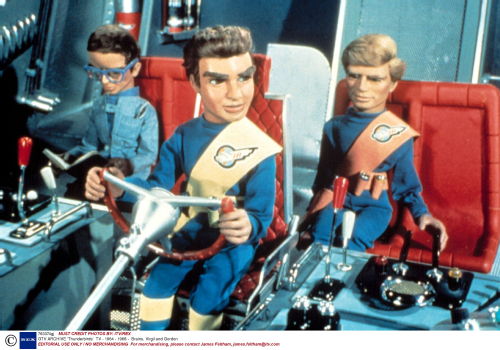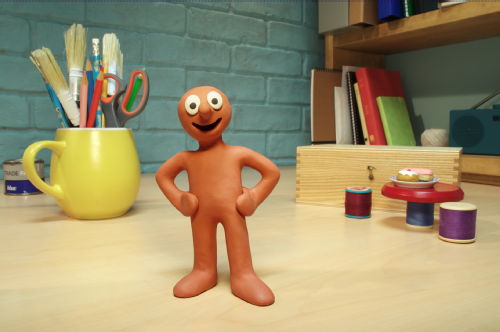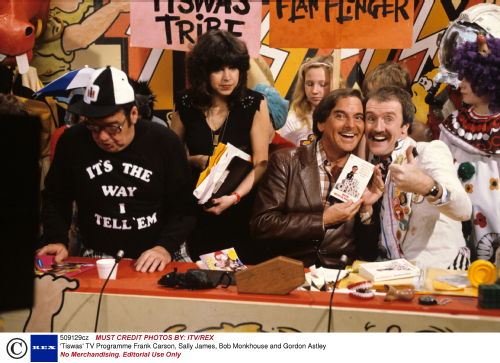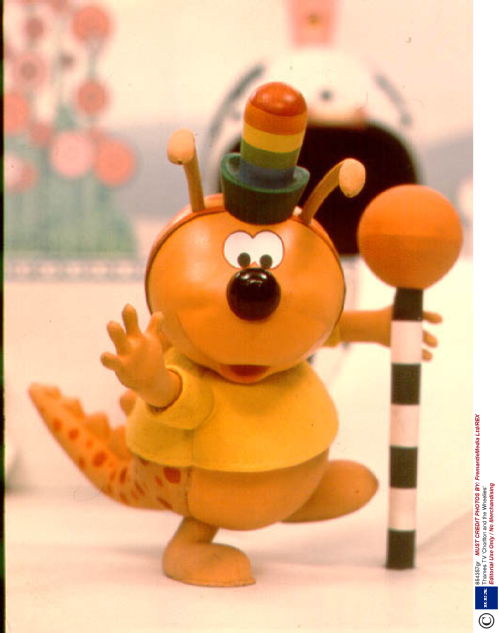SMALL PEOPLE AND THE SMALL SCREEN The story of children’s television from 1946 to today
 Exactly 50 years after Thunderbirds first blasted onto our screens, International Rescue is making a dramatic 21st century comeback – and it’s set to save us from our modern, over-complex lives, according to leading academics.
Exactly 50 years after Thunderbirds first blasted onto our screens, International Rescue is making a dramatic 21st century comeback – and it’s set to save us from our modern, over-complex lives, according to leading academics.
It is no coincidence that the iconic children’s programme is returning to ITV this year along with the BBC’s 2015 remake of The Clangers, and 15 new episodes of Morph which have been created by Aardman, as we are riding a genuine nostalgia wave for early children’s television, say Dr Rachel Moseley and Dr Helen Wheatley, Associate Professors at the Department of Film and Television Studies at the University of Warwick.
They have worked closely with museum curators at the nearby Herbert Art Gallery & Museum, to create a new exhibition: The Story of Children’s Television, which is set to go on display at the museum in Coventry from 22 May until 13 September this year.
The highly interactive exhibition is a celebration and exploration of children's television in Britain, and contains original material from some of the nation’s favourite children’s programmes, such as the original Tracy Island model created on Blue Peter, Gordon the Gopher from the Broom Cupboard and characters from The Wombles.
It has been developed by staff at the museum in close collaboration with the Department of Film and Television Studies at the University of Warwick, the BBC and Kaleidoscope, the classic television organisation.
According to Drs Moseley and Wheatley, the desire to relive our childhood and share it across the generations is borne out by the frequent re-makes, repeats, and DVD releases of long-time small screen favourites such as Dr Who, Bagpuss and Pipkins.
“Nostalgia is a major theme because it takes the viewer back to childhood, a time when life was simpler. It is perceived to be a warmer time of real home comforts and shared viewing which may or may not have been true in most cases.”
“Much early children's television was broadcast live, and there is a long history of small, independent production companies making the children's television programmes that are so fondly remembered. That ingenuity and creativity lives on in modern children’s TV which owes a huge debt to what went before. Current programming reinvents many of the past themes and characters, but also uses new interactive media to make them engaging and relevant for the 21st century child.”
The Story of Children’s Television contains a wide range of stills, clips and objects from iconic children’s TV shows such as Muffin the Mule and Grange Hill. It will be filled with on-screen production items, props, scripts, spin-off toys and other merchandise. It will also reference some of the latest programming for children and their families, including hugely popular apps which are transforming the way that children access TV content.
Stephanie Brown, Director of Marketing at Culture Coventry, the trust which runs the Herbert Art Gallery & Museum, said: “We are all extremely excited about re-living our childhoods from Captain Pugwash to Basil Brush and The Magic Roundabout, and there are many original artefacts and interactive features that will enthral adults and children alike. In many ways, the Story of Children’s Television is the story of all of our childhoods, helping us to shape our sense of who we were and of the world beyond ourselves.”
The Story of Children’s Television is at the Herbert Art Gallery & Museum, Coventry from 22 May to 13 September 2015. The exhibition is supported by the Heritage Lottery Fund.
Ends
PRESS CONTACTS:
For more information or to interview Dr Moseley or Dr Wheatley, please contact Alison Rowan, Communications Manager on a.rowan@warwick.ac.uk or by telephone on 024 76 150423 or 07876218166.
For exhibition information please contact:
John Wilson – 07766 660790 – john@freerangeheads.co.uk
Stephanie Brown – 024 7623 4279 – stephanie.brown@culturecoventry.com
Images:

Morph image reproduced by kind permission of Aardman ©



